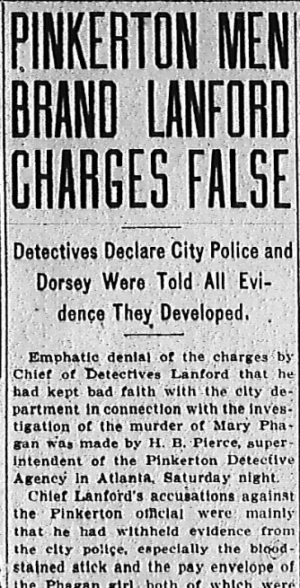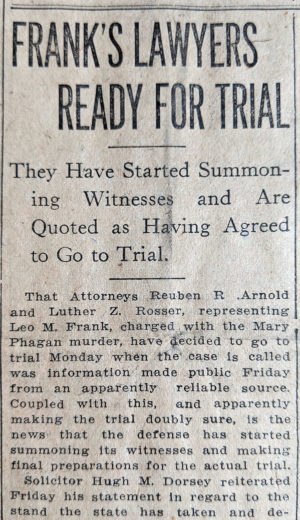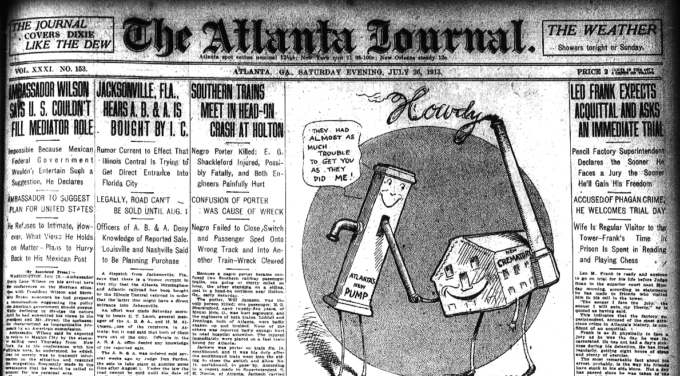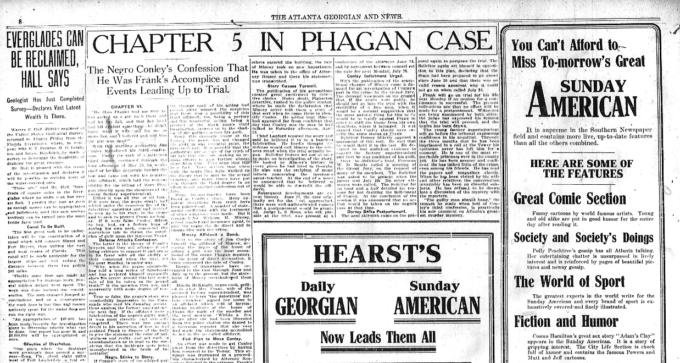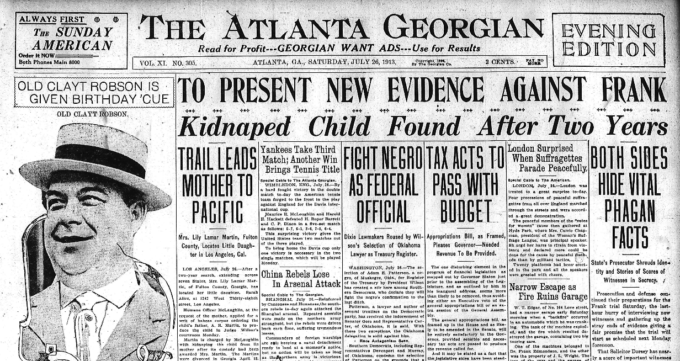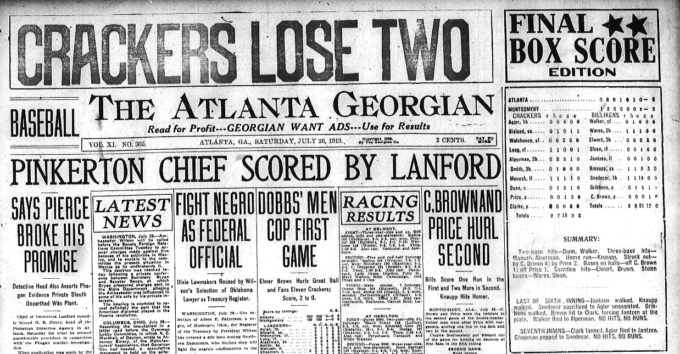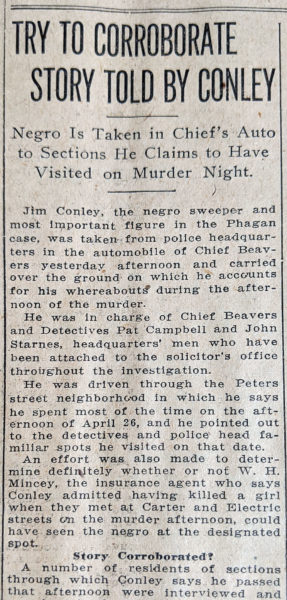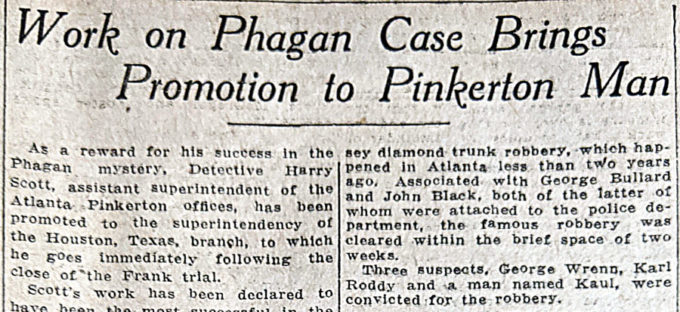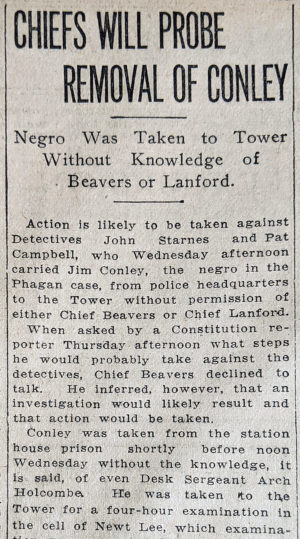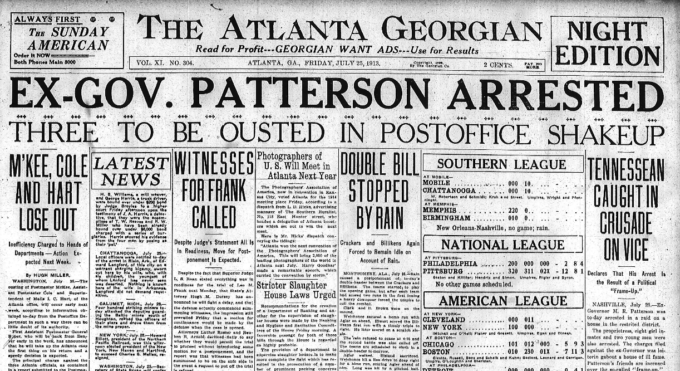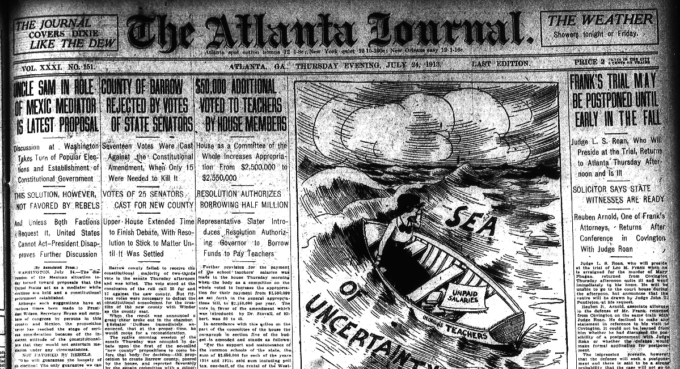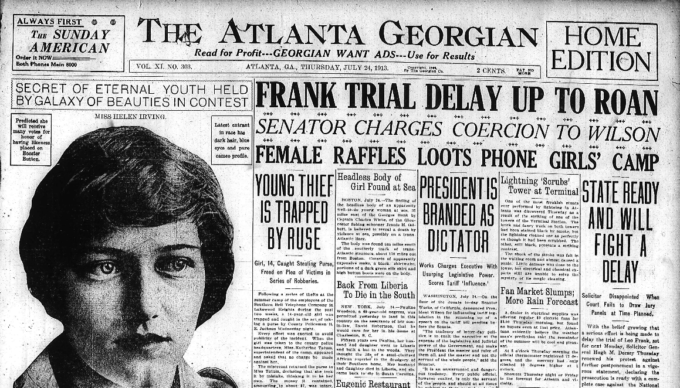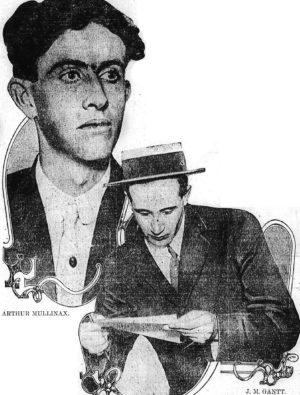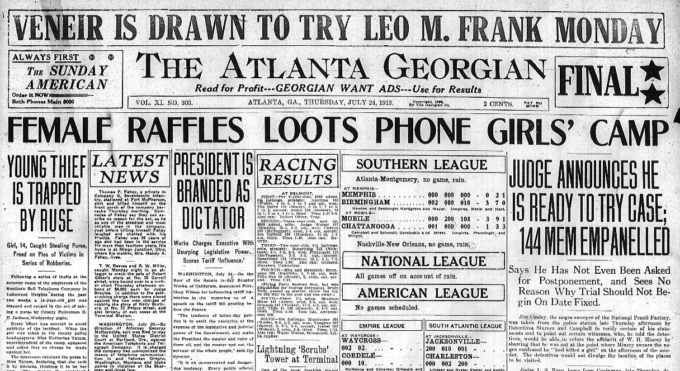Another in our series of new transcriptions of contemporary articles on the Leo Frank case.
Atlanta Georgian (Hearst’s Sunday American)
July 27th, 1913
Dorsey Ready to Avenge Mary Phagan
Mystery of Months Is Still Unsolved
Most Bitter Legal Battle in History of Atlanta Courts Is Expected—Case Will Probably Last for Weeks.
After three months of mystery in the death of Mary Phagan, a climax is at hand more tense, more dramatic, more breathlessly interesting to Atlanta and all Georgia than any situation of fiction. Leo M. Frank, employer of the little girl whose tragic death, April 26, stirred a State, will be brought to trial Monday on the charge that he killed her.
Frank’s trial is the crowning event of the hundred thrilling circumstances surrounding the tragedy. Whatever the outcome, regardless of Frank’s conviction or acquittal, the incidents that follow the trial will come as an anti-climax. The prosecution has cast almost all its chances for solving the mystery into the case it has prepared against Frank. Its heavy guns are trained against the factory superintendent. It has opposed the indictment of the single other suspect, the negro Jim Conley. The enthralled interest of a public has been pitched about the question: Is Leo Frank guilty?
FRANK DRAMA’S CENTRAL FIGURE.
Even the pitiful figure of the little factory girl, mysteriously slain, has become subordinate in interest to that of Frank. The young man’s own personality, his steadfastly loyal and loving family, his friends who affirm his innocence in the face of a dark suspicion, all have become factors in making Frank the central figure of the crime drama.
Continue Reading →

